Ambrosia trifida
Highly allergenic species commonly found in disturbed soils
Ambrosia trifida great ragweed
For the fall hay fever sufferer, it is not bad enough that we have the common ragweed (Ambrosia artemisiifolia), but there is also the great ragweed, also a member of the aster family. Unlike the common ragweed that grows from 1-5 feet tall, the great ragweed can grow to a height of 15 feet and has numerous side branches. Its leaves are less dissected than those of common ragweed, usually having pointed 3-lobed leaves. These leaves are large—up to 8 inches long. Although less common as a lawn and garden weed, the great ragweed will grow along roadsides, stream banks and in fields. It is a widespread plant in North America, except for the far north. The blooming period is August to October. Like the common ragweed, it is normally wind-pollinated. Although it produces no nectar, bees may visit the flowers for the abundant pollen. The small composite flower heads are greenish, but may appear yellow due to the color of the pollen. The flowers are in elongated terminal clusters with male flower heads above a smaller number of female flower heads. The clusters may be 1-10 inches long. A single plant may produce hundreds of flower heads. There is no floral scent. The fruit is shaped like a top and tipped with a stout projection surrounded by four to ten short points.
Habitat & Range
Grows in fields, along roadsides and floodplains.
Present in most counties of the state.
| EMP: | FAC |
|---|---|
| NCNE: | FAC |
Phenology
Flowers August to October.
Plant Codes
S-rank: No rank
G-rank: G5 (Secure)
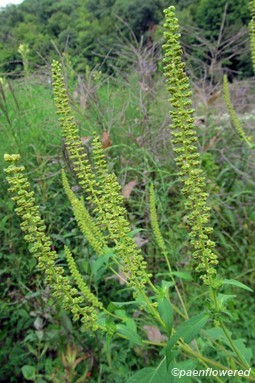
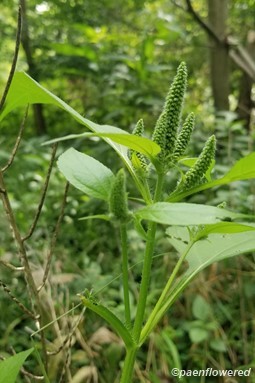
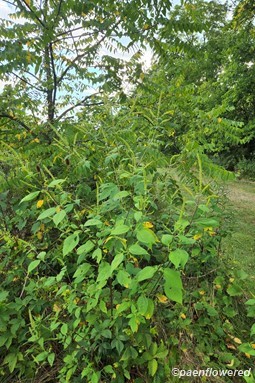

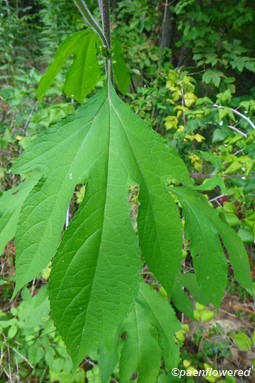

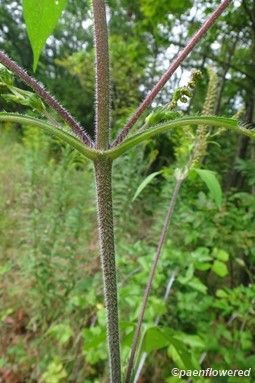

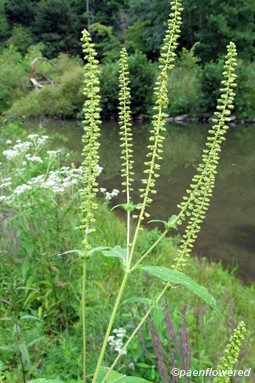


Comments
Have you spotted this plant in your area? We'd love to hear about your experience! Share your comments or questions about the plant below. Comments are moderated before posting.